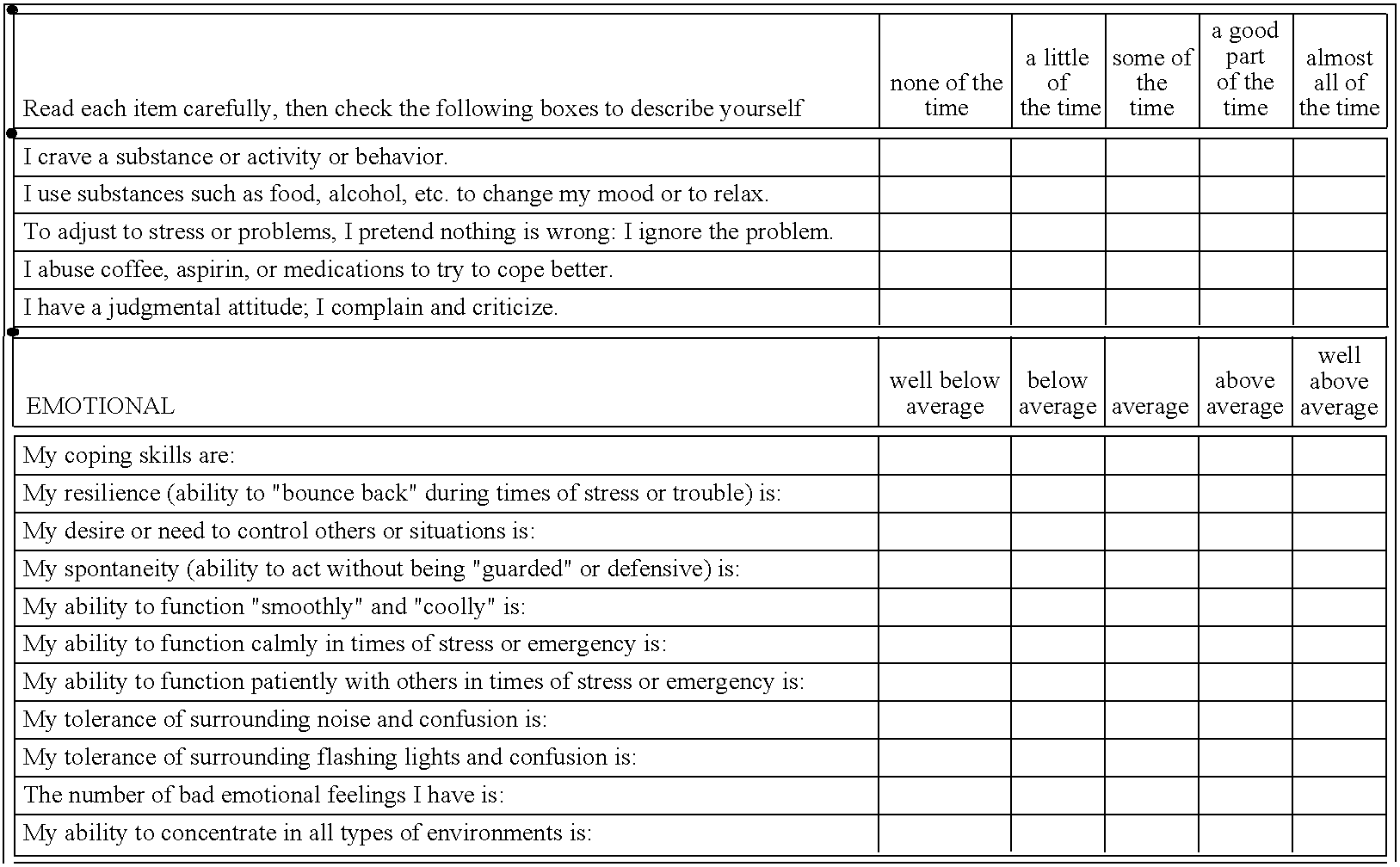Diagnosis and treatment system for reward deficiency syndrome (RDS) and related behaviors
- Summary
- Abstract
- Description
- Claims
- Application Information
AI Technical Summary
Benefits of technology
Problems solved by technology
Method used
Image
Examples
example i
Composition A
[0230]The invention includes the intravenous administration of a new class of anti-craving compositions provided by substances which inhibit the breakdown of endogenous substances such as enkephalins and endorphins. Specifically, D-phenylalanine, DL-phenylalanine, D-Leucine, DL-Leucine, and hydocinnamic acid, each in an intravenous solution in sufficient concentration to bring about enkephalinase inhibition which would significantly lower alcohol intake in animals and humans. The anti-alcohol desire effect has been observed in animals genetically prone to choose alcohol over water, but this effect has never been observed via the intravenous route. The inventors believe that the intravenous route would be advantageous since the dose needed would be much less than what is required by the oral dose. In a series of experiments the exact dose will be determined in both humans and animals to at least reduce alcohol or drug intake. In this invention only and not in limitation,...
example ii
[0234]The inventor believes that the substrate for RDS behaviors is mediated by regions in the brain's “pleasure center” or “reward centers” which are high in a number of neurotransmitters including dopamine. These regions include the dopamine—containing nucleus accumbens, and its projection to limbic structures and frontal cortex. It has been observed that if dopamine projections to limbic and cortical areas are lessioned the self-administration of psychoactive drugs which release dopamine (e.g. alcohol, cocaine, heroin, nicotine etc) by animals are greatly reduced. Moreover, selective dopamine receptor antagonists, like haloperidol, atenuate or block alcohol and cocaine self-administration in animals. Similarly, in humans, pretreatment with dopamine receptor antagonits will block stimulant-induced “euphoria”. Additionally, dopamine receptor agonists e.g. bromocryptine, apomorphine etc) have rewarding actions. These and other studies suggest that the lack of “reward” a...
example iii
[0255]In this composition the inventors are including a tryptophan concentration enhancing amount of all salts and chelates of chromium (e.g. picolinate, nicotinate, ablion chelate etc).
Background on Chromium
[0256]Body cells need chromium to keep insulin working properly as well as a host of other important biological actions. Scientists agree, that insulin directs the movement of digested food into the body's cells and affects how that food is used. When insulin doesn't act as intended, blood glucose and fat aren't stored and used properly. This malfunction leads to obesity, heart disease, or diabetes.
[0257]Our diets contain little chromium, and what chromium we do eat is often in a form that is difficult for the body to absorb. Therefore, chromium must be combined with a substance that will allow this substance to enter the bloodstream. A number of forms include picolinate, polynicotinate as well as Ablion chelate. Dozens of studies have proven that chromium, in the f...
PUM
 Login to View More
Login to View More Abstract
Description
Claims
Application Information
 Login to View More
Login to View More - R&D
- Intellectual Property
- Life Sciences
- Materials
- Tech Scout
- Unparalleled Data Quality
- Higher Quality Content
- 60% Fewer Hallucinations
Browse by: Latest US Patents, China's latest patents, Technical Efficacy Thesaurus, Application Domain, Technology Topic, Popular Technical Reports.
© 2025 PatSnap. All rights reserved.Legal|Privacy policy|Modern Slavery Act Transparency Statement|Sitemap|About US| Contact US: help@patsnap.com



